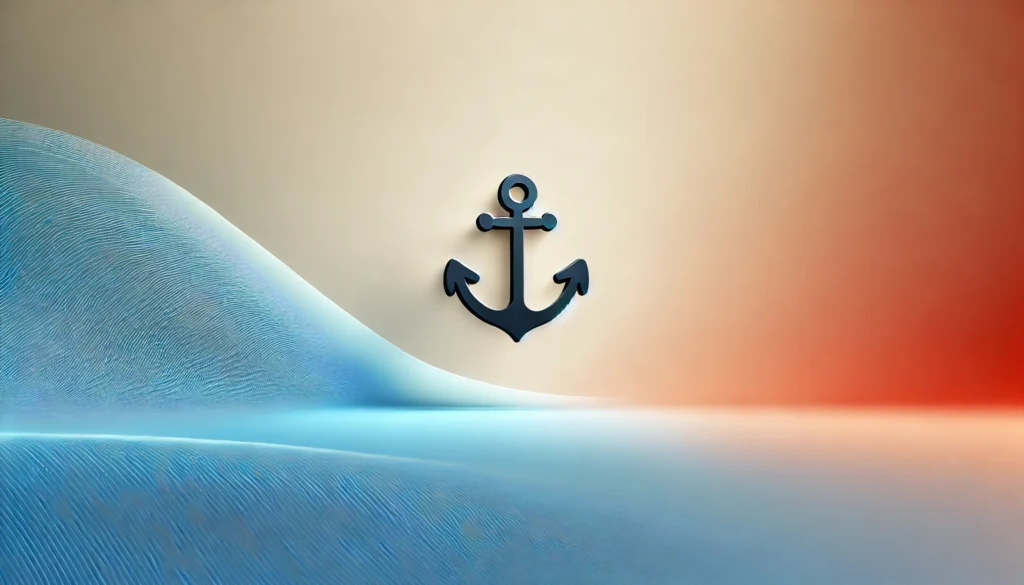The Carolina Skiff 18 JVX is a popular and versatile skiff known for its shallow draft, durability, and ease of use. This skiff is ideal for fishing, shallow water boating, and other recreational activities. However, many boat owners wonder whether this skiff comes equipped with a windlass, especially a 12-volt (12V) windlass, and if not, whether installing one is possible or necessary. In this article, we’ll explore this question in depth and discuss the options, benefits, and challenges of installing a 12V windlass on a Carolina Skiff 18 JVX.
Introduction: Overview of the Carolina Skiff 18 JVX
The Carolina Skiff 18 JVX has earned a reputation for being one of the most affordable, stable, and easy-to-handle boats in its class. It is designed primarily for shallow waters and frequently used for inshore fishing, leisure, and family boating. The open layout and flat-bottomed hull give it incredible stability on calm waters, while its lightweight construction allows for easy towing and launching.
However, this skiff does not come with many of the high-end features found on larger vessels, such as a windlass system. Adding a windlass, especially a 12V one, simplifies the process of anchoring and retrieval for boaters who seek convenience. In this article, we will examine whether the Carolina Skiff 18 JVX includes a windlass and, if not, how you can install one.
What is a Windlass?
A windlass is a mechanical device that raises and lowers anchors with ease. Instead of manually lifting the anchor, a windlass uses either manual power or electricity, making the process simpler and less physically demanding. This is particularly useful for larger boats or those with heavy anchors, as manually pulling up a heavy anchor can be both dangerous and time-consuming.
Windlasses come in two types: manual and electric. The electric versions typically operate on the boat’s battery system, with 12V systems being the most common for small to medium-sized boats. For this article, we will focus on the 12V windlass, which is ideal for boats like the Carolina Skiff 18 JVX due to its compatibility with the boat’s electrical system.
Types of Windlasses: Manual vs. Electric
When choosing a windlass, you have two main options: manual or electric. A manual windlass is operated by hand and relies on gears or levers to raise and lower the anchor. While this option costs less, it requires more effort and is less convenient, especially for solo boaters or those with larger anchors.
An electric windlass, powered by the boat’s electrical system (usually a 12V battery), eliminates the need for physical effort. With the push of a button, an electric windlass raises or lowers the anchor automatically. For modern boats, electric windlasses have become the preferred choice due to their ease of use and efficiency.
For the smaller Carolina Skiff 18 JVX, a 12V windlass would provide the right balance of power and convenience.
What is a 12V Windlass?
A 12V windlass operates on a 12-volt electrical system, standard for most small and mid-sized boats. It uses the boat’s electrical power—typically from one or more batteries—to raise and lower the anchor. The 12V windlass suits boats like the Carolina Skiff 18 JVX because it provides the necessary power without requiring a more complex or expensive electrical setup.
These windlasses come in various designs, including vertical and horizontal models. Both types offer specific benefits, but the size and layout of the Carolina Skiff 18 JVX will guide which design fits best. A 12V windlass offers boaters a hassle-free way to manage anchoring without the strain of manual labor.
Does the Carolina Skiff 18 JVX Come with a 12V Windlass?
The Carolina Skiff 18 JVX does not include a 12V windlass as standard equipment. This model is designed to be lightweight, affordable, and customizable based on the owner’s preferences. While it comes with essential features like a shallow draft, open deck space, and built-in rod holders, more advanced features like a windlass are optional upgrades.
The boat is highly adaptable, and many owners choose to install aftermarket accessories, including a 12V windlass, to increase ease of use. If you want a windlass for your Carolina Skiff 18 JVX, adding one is entirely possible with the right preparation and equipment.
Can a 12V Windlass Be Installed on a Carolina Skiff 18 JVX?
Yes, a 12V windlass can be installed on a Carolina Skiff 18 JVX, though it is not a straightforward task. The boat’s small size and layout require careful consideration of factors such as available space, compatibility with the electrical system, and whether modifications to the anchor locker or bow area are needed.
The boat’s electrical system may need upgrades to handle the windlass’s power demands. Since most 12V windlasses consume a significant amount of energy, you might need to upgrade or add a battery dedicated to the windlass. Additionally, reinforcing the mounting area on the bow is essential to withstand the anchor’s stress.
Benefits of Installing a 12V Windlass on a Carolina Skiff 18 JVX
Adding a 12V windlass to your Carolina Skiff 18 JVX offers several benefits. First and foremost, it makes anchoring more convenient. Instead of manually lifting the anchor, which can be physically demanding, especially with a heavy anchor or strong currents, the windlass automates the process, requiring little effort.
Using a windlass also increases safety. It eliminates the risk of handling a heavy anchor in slippery conditions, reducing the chance of accidents or injuries. Additionally, the windlass enhances anchoring efficiency, allowing you to quickly set or retrieve your anchor, which is particularly helpful when fishing or in areas with strong tidal currents.
Challenges of Adding a 12V Windlass to a Carolina Skiff 18 JVX
Despite its benefits, installing a 12V windlass on the Carolina Skiff 18 JVX presents some challenges. Space is a primary concern. You need to find a suitable location for the windlass, anchor rode, and wiring. The small size of the skiff requires careful planning to ensure proper installation.
Additionally, the windlass places significant power demands on the boat’s electrical system. You may need to upgrade the battery or install a separate one dedicated to running the windlass. Lastly, you need to consider weight distribution, as adding a windlass and chain to the bow could affect the boat’s balance and performance.
What to Look for in a 12V Windlass for Your Boat?
When selecting a 12V windlass for your Carolina Skiff 18 JVX, several factors need to be considered. First, choose a windlass that matches your boat’s size and the anchor’s weight. Windlasses are rated to handle specific anchor sizes, so ensure the windlass can handle your anchor without being overpowered or underpowered.
Next, evaluate the installation space. Choose a model that fits your boat’s layout, whether you need a vertical or horizontal installation. Also, make sure the windlass is corrosion-resistant, especially if you operate in saltwater environments, to ensure it lasts longer with minimal maintenance.
Lastly, check the windlass’s power consumption. Ensure your boat’s electrical system can handle the extra load without straining the battery, and consider adding a dedicated power source if necessary.
How to Install a 12V Windlass on a Carolina Skiff 18 JVX
Installing a 12V windlass on your Carolina Skiff 18 JVX requires a bit of planning and technical know-how. Here is a step-by-step guide to help you with the process:
- Choose the right windlass: Select a windlass designed for small boats and compatible with your anchor setup. Make sure the windlass can handle the weight of your anchor and rode.
- Prepare the anchor locker: Ensure the anchor locker has enough space to hold the rode and chain. You might need to modify or reinforce the locker to accommodate the windlass installation.
- Reinforce the mounting area: Install backing plates or additional bracing on the bow to handle the stress caused by the windlass and the anchor. Proper reinforcement ensures that the windlass remains secure and functions effectively.
- Run electrical wiring: Use marine-grade wiring to connect the windlass to your boat’s electrical system. Follow safety guidelines by installing a circuit breaker or fuse to protect both the windlass and your boat from electrical issues.
- Mount the windlass: Secure the windlass to the deck according to the manufacturer’s instructions. Make sure the installation is tight and stable, preventing any movement during operation.
- Test the windlass: After installation, test the windlass to verify that it raises and lowers the anchor smoothly. Check for any issues and resolve them before relying on the system during boating.
Professional Installation vs. DIY: Which is Better?
When you consider adding a 12V windlass to your Carolina Skiff 18 JVX, you need to choose between professional installation or a DIY approach. Both options offer advantages depending on your experience and budget.
Professional installation ensures that experts properly fit the windlass to your boat, taking into account all technical aspects like wiring, mounting, and safety measures. The result is a seamless installation that guarantees long-term performance. However, this route can be costly, especially if your boat requires extensive modifications.
On the other hand, DIY installation offers significant cost savings and allows you to tackle the project yourself. If you have experience with marine electrical systems and mechanical installations, you can follow the manufacturer’s instructions to install the windlass. While DIY requires time and patience, the sense of accomplishment and saved expenses can make it a rewarding experience.
Best 12V Windlass Models for Carolina Skiff 18 JVX
Several models of 12V windlasses work well with the Carolina Skiff 18 JVX. Here are three of the top choices:
- Lewmar Pro-Fish 700: This compact and durable windlass is perfect for smaller boats like the Carolina Skiff. The Lewmar Pro-Fish 700 offers corrosion resistance and strong pulling power, making it a top choice for saltwater environments.
- Quick Balder 600: Known for its ease of installation and reliability, the Quick Balder 600 is ideal for boaters who need a simple yet effective windlass system. Its compact design ensures that it fits well on small boats, without taking up too much space.
- Maxwell RC6: The Maxwell RC6 offers premium performance with its compact design. Though slightly more expensive, it can handle heavier loads, making it a great choice for those using larger anchors or boating in rougher conditions.
Consider these options based on your boating habits, anchoring needs, and available space on the skiff.
Power Requirements for a 12V Windlass
When adding a 12V windlass, you need to ensure that your boat’s electrical system can handle the additional load. Windlasses generally draw between 50 and 120 amps, depending on the model and the size of the anchor. This amount of power can strain a boat’s electrical system, especially if you’re running other devices like GPS or a trolling motor.
For the Carolina Skiff 18 JVX, you may need to upgrade your battery or add a secondary one dedicated to powering the windlass. Doing so ensures that your boat remains operational even when using the windlass for extended periods. Installing a circuit breaker or fuse will protect your windlass and electrical system from overloads.
Maintaining Your 12V Windlass: Tips for Longevity
To keep your 12V windlass functioning smoothly, follow these maintenance tips:
- Clean regularly: After each trip, rinse your windlass with fresh water to remove salt and debris, especially if you’re boating in saltwater. Keeping the windlass clean prevents corrosion and buildup that could affect its performance.
- Inspect for wear: Periodically inspect your windlass for signs of wear and tear. Look at the wiring, moving parts, and any areas exposed to harsh marine conditions. Replace any worn-out parts promptly to prevent failure.
- Lubricate moving parts: Some windlasses require lubrication to maintain smooth operation. Follow the manufacturer’s guidelines and lubricate the necessary components to prevent stiffness and wear over time.
Regular maintenance will ensure that your windlass lasts for years and operates effectively whenever you need it.
How Does a 12V Windlass Impact Boating Efficiency?
Installing a 12V windlass improves boating efficiency in several ways. By automating the anchoring process, you save time and effort. Instead of manually raising or lowering the anchor, which can take several minutes, a windlass allows you to do it in seconds with the push of a button.
A windlass also enhances safety, especially in challenging conditions like strong currents or deep waters. You can deploy or retrieve the anchor without leaving the helm, reducing the risk of injury or accidents. Overall, the windlass boosts your boat’s performance by providing a quicker, safer, and more convenient anchoring solution.
User Experiences: What Boat Owners Say About Windlasses on Carolina Skiff 18 JVX
Boat owners who have installed a 12V windlass on their Carolina Skiff 18 JVX report significant improvements in their boating experience. Many highlight the convenience of quickly anchoring in strong currents or deep water without the need for manual effort.
Boaters who fish frequently appreciate the time saved during anchoring, allowing them to focus more on their activities. Those who often boat solo find the windlass invaluable, as it eliminates the need for physical labor when handling the anchor.
A few users, however, mention the importance of paying attention to the boat’s weight distribution after installation. Adding a windlass can alter the balance of a small boat like the 18 JVX, which is something to monitor after installation.
Common Mistakes When Installing a 12V Windlass
Avoid these common mistakes during windlass installation:
- Underestimating power needs: Failing to assess the power demand can lead to an insufficient electrical setup, causing the windlass to malfunction or drain the battery too quickly.
- Incorrect mounting: Ensure that you mount the windlass securely. Improperly securing it could lead to structural damage to the bow or prevent the windlass from working correctly.
- Incompatible rode: Not all windlasses handle every type of anchor rode. Double-check your windlass’s specifications to ensure it matches your anchor and rode setup.
By avoiding these mistakes, you’ll have a reliable windlass that operates smoothly for years to come.
Do You Really Need a Windlass on a Carolina Skiff 18 JVX?
While a 12V windlass adds convenience and safety, not every boater may need one for their Carolina Skiff 18 JVX. If you only boat in shallow waters or don’t anchor often, the manual process may be sufficient. Additionally, if you prefer the simplicity and lower cost of manual anchoring, you may find that a windlass isn’t necessary.
However, if you frequently anchor in deep waters, fish in areas with strong currents, or boat solo, a windlass can make your experience much easier. In these cases, the investment in a windlass proves highly valuable.
Alternatives to a 12V Windlass for Small Boats
For those who feel a windlass might be overkill, alternative options are available. A manual anchor system with a rope and cleat works for smaller boats in shallow waters. Another option is using electric winches, which offer mechanical assistance without the full automation of a windlass.
Manual systems may require more physical effort, but they provide a simpler and more affordable solution. Electric winches strike a balance between manual effort and full automation, making them an appealing middle-ground option.
Conclusion: Should You Install a 12V Windlass on Your Carolina Skiff 18 JVX?
In conclusion, installing a 12V windlass on your Carolina Skiff 18 JVX can greatly enhance your boating experience by making anchoring easier, faster, and safer. Although the boat does not come with a windlass as standard equipment, adding one is possible with the right preparation.
Before you proceed, consider your boating habits, the cost of installation, and whether your electrical system can handle the windlass’s power needs. If you decide to go ahead, carefully select the windlass model that best suits your boat and follow proper installation procedures to ensure you get the most out of this upgrade.


